Every sport has a set of basic skills associated with it. For soccer, it’s kicking a ball; for baseball, it’s swinging a bat and catching a ball; and for hockey, it’s skating and shooting a puck. While each of these sports also has specialized positions, every player should know at least the basic set of skills for their sport. Volleyball is no exception.
The classic set of skills in volleyball can be summed up by the phrase, “Bump, Set, Spike!” While it’s true that each team can touch the ball up to three times before it has to go back over the net (actually, four times when you count the block), players have a few more options than just bumping, setting, and spiking.
The seven basic skills of volleyball are:
- Forearm passing (also known as bumping)
- Volleying
- Setting
- Digging
- Attacking
- Blocking
- Serving
Here is a brief explanation of each of the seven skills, and why they’re so important.
1. Forearm Passing or Bumping
By far one of the most basic skills in volleyball is passing, also known as bumping. This is when a player contacts the volleyball with their forearms and redirects the ball to one of their teammates.
But don’t think of elementary school gym class, when everyone just stands there with their hands clasped in front of them, waiting for the ball to come to them. A good passer doesn’t wait for the ball – he or she moves to meet the ball.
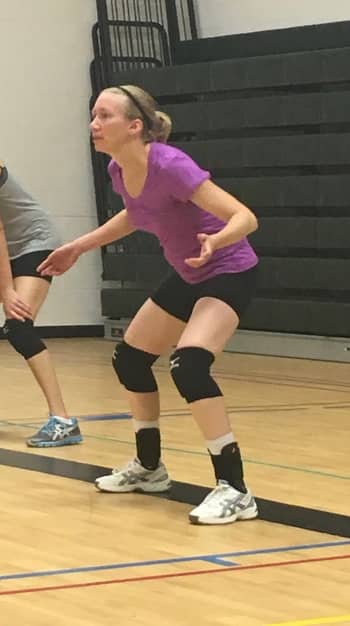
A good defensive stance when waiting to pass the ball is to have bent knees, body leaning forward at the waist with the weight of the body slightly forward, and arms bent out in front but hands not clasped together. This position makes it easier to move towards the ball. Try running with your hands clasped in front of you – not very natural, is it?
Don’t just swing your arms at the ball – aim your pass by point your hands and shoulders in the direction you’d like the ball to go.
Passing the ball is one of the most important skills, because it’s usually the first of the three ball contacts the team makes. A good pass will make it easier for the setter to get a good setup to the hitter. A bad pass makes it a lot harder to execute a good bump-set-spike play. As my coach used to say, “It starts with a pass”!
2. Volleying
Many beginners think a volley and a set are the same thing, but they are actually two different terms. A volley is a more generic term that means contacting the ball as an overhead pass with your hands (mostly your fingers). A set is actually a type of volley.
A volley can be used on your own side of the court, or it can be used as an offensive way of getting the ball back over the net. A set, on the other hand, is generally a pass between players on the same team. Setting the other team happens occasionally as an error, but really, you want to try to avoid setting up the other team to hit the ball back at you!
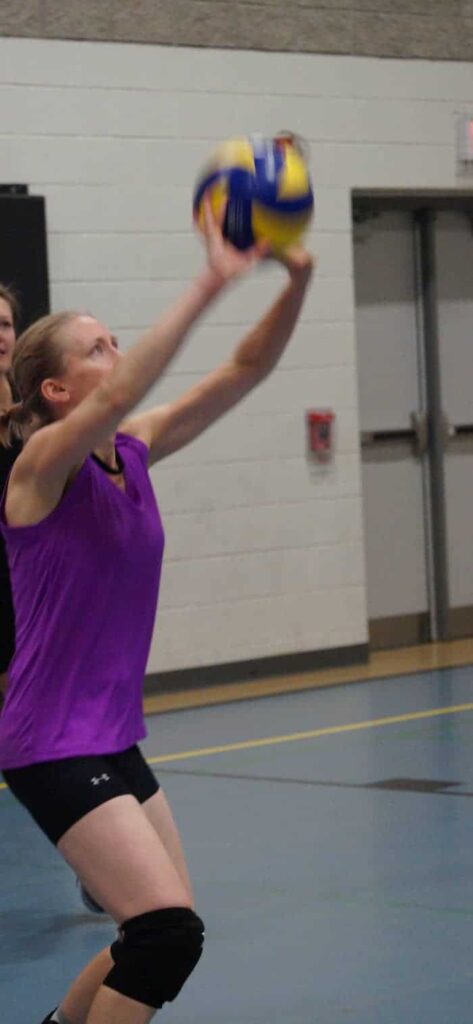
Put your hands up over your head, with your index fingers almost touching your forehead and your thumbs and index fingers shaping into almost a diamond – that’s the starting point for an overhead pass.
Don’t contact the ball with your arms fully extended, otherwise the only strength you’ll have behind your volley will be from your wrists. You’ll want to bend your arms, as well as your knees, and extend them both as you’re contacting the ball. Now you can actually get some distance to your volley!
Many beginners shy away from trying to volley, because it’s easy to get a ball violation call if you’re using the wrong technique. But being able to volley well is important, because there will definitely be times when you’ll need to pass the ball overhead. You can’t always rely on just bumping the ball! The good news is that there are drills that you can do by yourself to improve your volleying skills.
3. Setting
A set is a specialized type of volley. It’s usually the second hit, and it’s intended to set up one of your teammates to attack the ball. So, it’s basically volleying the ball in a way that means the attacker can hit the ball over the net.
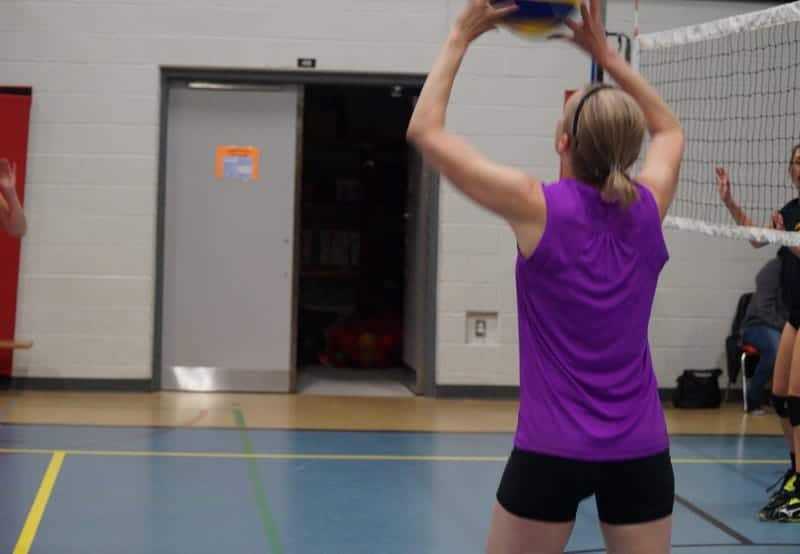
The difference between a set and a regular volley is that you are aiming your set in a very specific way. Getting it on target is the most important factor when setting the ball. You’ll also need to volley it high enough that the hitter has time to do their full approach. But not so high that they’re just waiting and waiting… which also give the blockers on the other team lots of time to get in place!
The speed of your set is also important. There are some trickier sets that are a lot faster (and require good communication between the setter and the hitter), but when executed well, they often get through the block.
A good set is actually about a foot away from the net. This gives the hitter enough room to follow through with their whole arm swing, and gives them enough room to land without touching the net.
The setter is a specialized position, which means there’s one player whose job it is to try to set every ball. However, even with a dedicated setter, there will be plays where the setter just can’t get to the second ball, and another player will have to set the ball. Being able to volley is necessary, but knowing the other factors like where to aim the set, and set speed and height will help to get a better set.
4. Attacking
While spiking is the most glamourous and well-known type of attack, there are actually other ways to deliver an offensive play as well.
Hitting or spiking is when a player jumps up and hits the ball with a one-armed overhead swinging motion, contacting the ball squarely with their slightly open hand. The intent of a hit is pure power – jumping helps generate more power and momentum. A skilled player also aims the ball around the block and targets the area of the opposing team’s playing area that they think has the weakest defense coverage.
The basic technique for delivering a hit actually begins with your feet, known as the hitting approach. Start by taking a big step with your non-dominate foot (for right-handed hitters, this is usually your left foot), then a big second step with your right foot. Then, plant your left foot beside your right foot, and jump. Taking those first two big steps helps give your jump more power and height.

When I was learning to hit, I would actually say to myself, “Leeeft, Right-Left”, drawing out the first left, then saying quickly the “Right-Left”. Sounds cheesy, but it helped with the timing of my approach, and it helped me to remember which foot to start my approach with.
A tip is similar to a hit in technique, but instead of powering the ball as hard as possible, the attacker simply pokes at the ball to “tip” it over the net. You can either use your fingertips, or your knuckles. Either way is allowed, as long as the ball isn’t held too long or carried.
A tip is often used intentionally to place the ball in the holes of the opposing team’s defensive setup… or, it can also be used as a last-ditch effort to get the ball over the net when the attacker has mistimed their hitting approach, or the set it too close to the net for the hitter to get a full arm swing.
A roll shot is also a great attacking option. This again is similar in technique to a hit, but instead of powering through the swing and contacting the ball as hard as possible, the hitter focuses more on placing the ball strategically, and swinging a bit more slowly. A player can hit a roll shot either using a jumping approach, or while keeping their feet on the ground.
The name “roll shot” comes from how the player contacts the ball, which is by rolling their open hand over or underneath it (instead of smashing it with a slightly open palm like a spike). This gives more control in placement, and also in timing. It also puts a spin on the ball, making it harder to pick up by the defensive player.
You might ask, why does a roll shot work so well? It seems like kind of a lame hitting option. However, a well-timed roll shot is actually one of the most strategic offensive plays. Most blockers anticipate a hard-driven hit, and time their jump to block it. With a good roll shot, the ball either goes over or around the blockers, who have already committed to blocking a hard-driven hit.
As a blocker there’s nothing worse than being in the air and seeing that ball soar over your head – ahh, so frustrating! Since you’ve already committed to the jump, you can’t exactly jump again while you’re still in the air!
However, as the hitter, you’ve just executed a smart and strategic play, which has a good chance of scoring the point. It may not have the glory of a powerful hit, but done at the right time, it’s a great play. And definitely worth a round of high 5s!
When you’re attacking the ball, remember that no part of your body is allowed to touch the net, or land on the other side of the net. This is especially important as the hitter, because the momentum from your jump can actually give you less control for where you’re landing. That’s why you want to be extra mindful of where you start your jump, so that you give yourself enough space to land on your side of the court, and also to swing your arm with enough follow through so that you’re not swiping the net after you’ve contacted the ball.
Being able to attack the ball well is a critical volleyball skill, as most points in volleyball are scored by a successful attack. You don’t have to be the best power hitter and get all the killer spikes. A well-timed and well-placed tip or roll shot has just as much chance of scoring the point.
5. Diving
Diving is basically crashing to the floor in an all-out attempt to keep the ball from touching the floor. Okay, it’s not really about crashing to the floor… using a good technique will not only help you save your body some aches and pains, but using some skill and coordination means you have a better chance of actually keeping the ball in play.
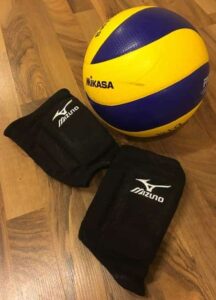
When diving for the volleyball, remember that you want to contact the ball before you hit the floor (unless you’re doing a pancake, see below). The diving technique is basically a way to land that minimizes the amount of impact on your body.
To break it down in slow motion, you basically forearm pass the ball, then commit to hitting the floor by bringing the side of your knee down to the floor (most likely your dominate side), followed by the side of your hip, then your chest. You want to avoid all parts of your body hitting the floor simultaneously, as this causes the most amount of impact (and pain!).
Also remember to keep your eyes looking up and forward as much as possible, as this will help keep your head from contacting the floor.
After a bit of practice, digging becomes second nature. When you’re ready feeling more proficient, you can try a pancake. No, this isn’t just a tasty breakfast treat! A pancake is when the player dives and slides for the ball, keeping their hand as flat on the ground as possible, so that the ball just bounces off their hand (without touching the floor) and stays in play.
When done correctly, a pancake dive play is spectacular, and will earn you lots of high 5s and cheers from your teammates, and maybe even some oohs and ahhs from the spectators. However, when done poorly, it can also result in a few good-natured laughs at just how mistimed, uncoordinated, and off-target your attempt was. Definitely worth the effort either way!
Some of my pancake attempts have resulted in pretty impressive digs, while other attempts have resulted in me missing where the ball landed by a whole hand! I just laugh along with my teammates while they help me off the floor. Hey, there was a slim chance of getting the ball anyway, so it’s definitely worth the effort to try!
Diving is probably one of the hardest skills to learn in volleyball, because, let’s face it, it can hurt. A lot. But give it a few tries, and you’ll get more comfortable with it.
6. Blocking
Probably one of the most straight-forward named skills, a block is a defensive play when a player jumps at the net to block the hit from coming onto their team’s side of the net. The key secret to blocking is timing. I’m 5’5, and I’ve blocked hitters who are over 6’ when I’ve managed to time my jump correctly.
There are, of course, other factors related to a great block. You want to keep your fingers splayed as wide as possible to cover as much space as you can. And since the hitter is trying their hardest to hit around or above your block, you want to keep an eye on their shoulder to try to determine where they’re aiming. This way you can adjust your hands to put them in front of the ball more accurately.
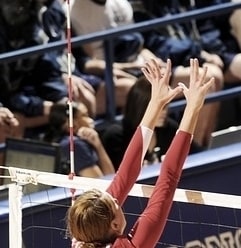
A lot of newer blockers think you just jump straight up, but you actually want to push your hands slightly forward at the peak of your jump. This action gives you more strength against the hard-driven spike when you contact it. Without this extra boost, you may still contact the ball, but the momentum from the swing will win out against your block, and the ball will still make it onto your side of the court.
When blocking, remember that no part of a player’s body can touch the net, either when they’re jumping up or when they’re landing. A player must also be careful that their feet stay on their side of the centre line. This is often how ankle injuries occur, when either the blocker or the hitter lands under the net and they land on the foot of the other player. This is how I sprained my ankle, and I still get a bit squeamish thinking about it! However, with the right technique, these kinds of injuries can be significantly minimized.
Blocking is an important skill, because it is literally the first line of defense against the attack coming over the net. Even if the block doesn’t completely stop the attack, it has a good chance of slowing down the ball so that another player can dig it up.
And sometimes having a block in place is a good intimidation factor for the player who is hitting the ball. It’s much easier to hit a ball over the net when there aren’t any hands in the way! Putting up a block means the attacker has to work just a little bit harder to earn the point.
7. Serving
Every play in volleyball starts with a serve. As one of my coaches used to say, serving is the only time in the game that you start with full control of the ball. This is why you’ll often see a lot of strategy used by servers.
A player can choose to serve over or underhand. An underhand serve is often seen as more of a beginner or recreational type of serve; however, I’ve seen some pretty aggressive underhand serves. There are many different techniques and strategies for each, so it’s really about which the player prefers.
Factors related to a good serve include targeting, speed, and spin. A good server takes a second or two to identify any areas of weakness in the opposing side’s serve receive setup, and then targets their serve to that area of weakness.
Obviously the faster a ball travels from a serve, the harder it is for the other team to react to. The trick to serving a ball fast is your arm swing when you contact the ball. Whether you’re serving over or underhand, remember to follow through with your swing, even after you’ve contacted the ball. This gives your swing a little more speed.
Not only is speed a factor, but so is putting spin on the ball. When there’s spin on a ball, it will either drop quickly once it sails over the net, or it will ricochet off the forearms of the player who is passing it – or both. Putting spin on a volleyball is a great skill, but does take time and practice to develop.
The official rules give players 8 seconds to serve the ball after the referee has blown the whistle, but some rec leagues give players 5 seconds, so be sure to check the rules for the league you’re playing in.
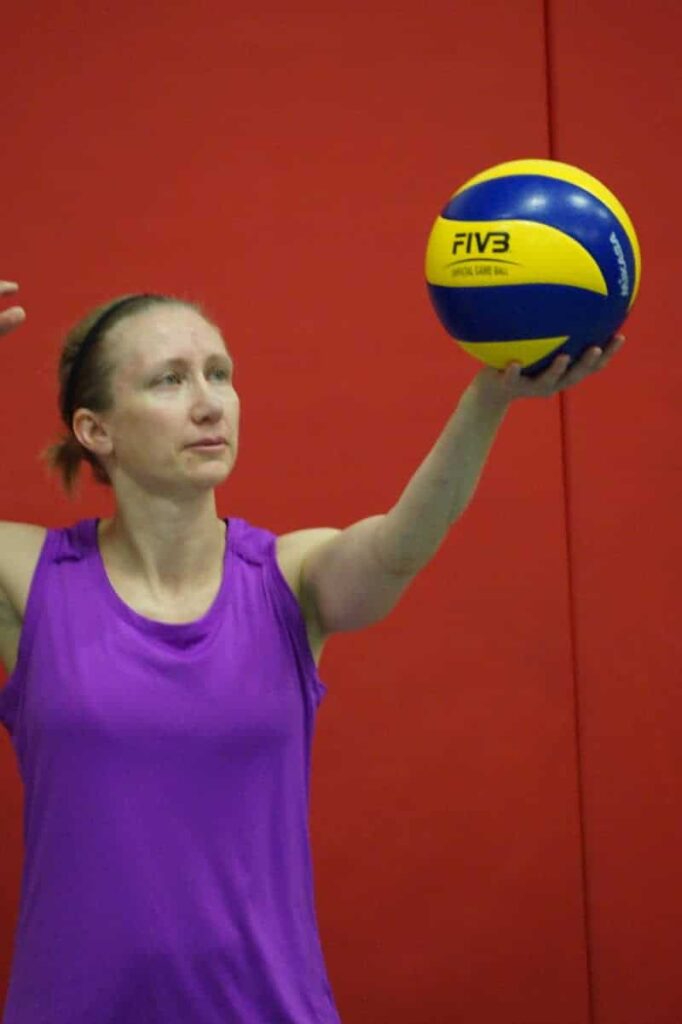
The best advice I can give for serving is to just take your time, and focus on getting the ball to where you want it to go. For beginners, that could just mean getting it over the net. Nothing wrong with that! As you build up your skill and confidence, work on looking at where the other team’s players are standing, and try to aim your serve to the holes in their defence.
Another important tip to remember when serving is to make sure that your feet don’t go over the serving line before you contact the ball. When serving, the player has to start outside the back line of the court, and can only step into the court after they’ve contacted the ball. Again, since you start with full control of the ball when serving, make sure you give yourself enough room to serve the ball without getting a foot violation. No one to blame but yourself for that error!
Click here for 16 volleyball tips for beginners
At high-calibre levels of play, volleyball is a sport of specialization, skill, and strategy. But you don’t have to be an expert in all the volleyball skills to play well! Knowing the basic skills is a great starting point, and you can build up your skill the more you play. Many players are more comfortable with some of the skills than others. Be open to learning from your experienced teammates, and you’ll definitely pick up some new skills the more you play.
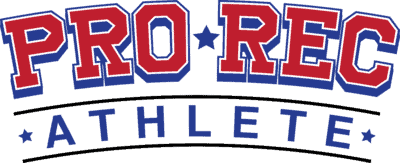
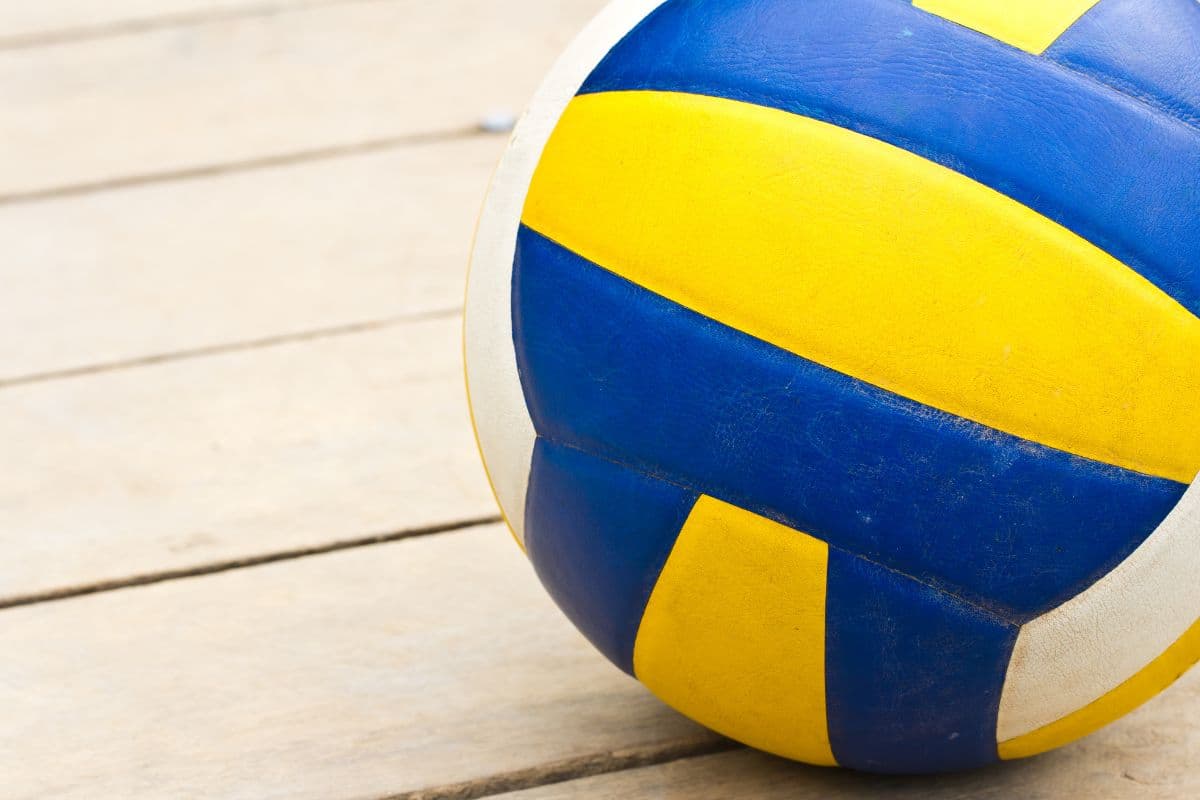
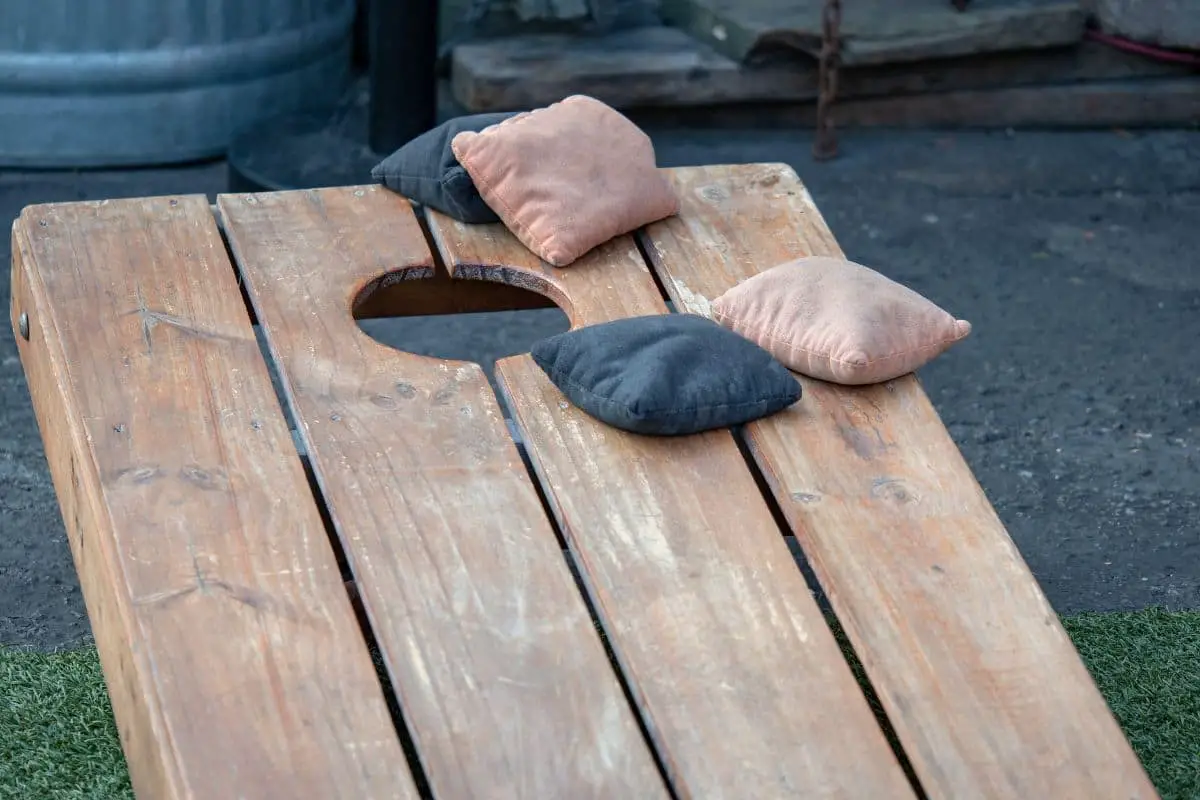
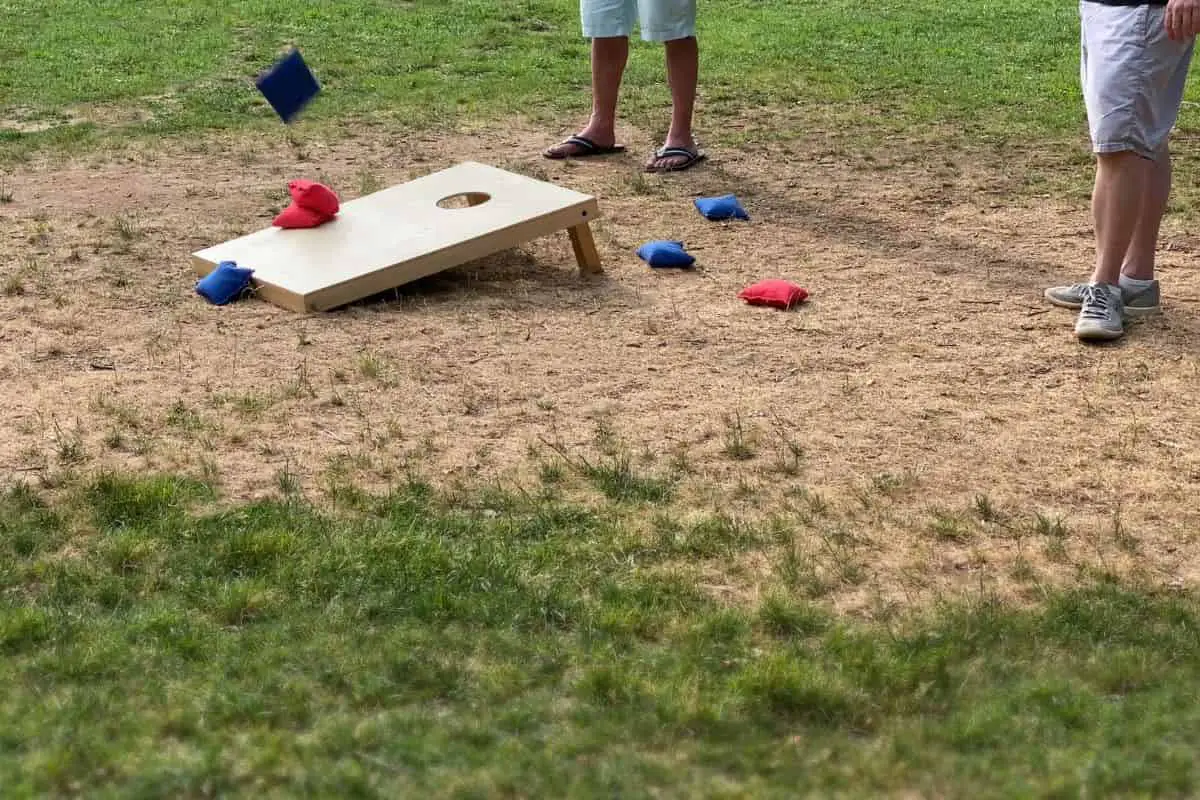
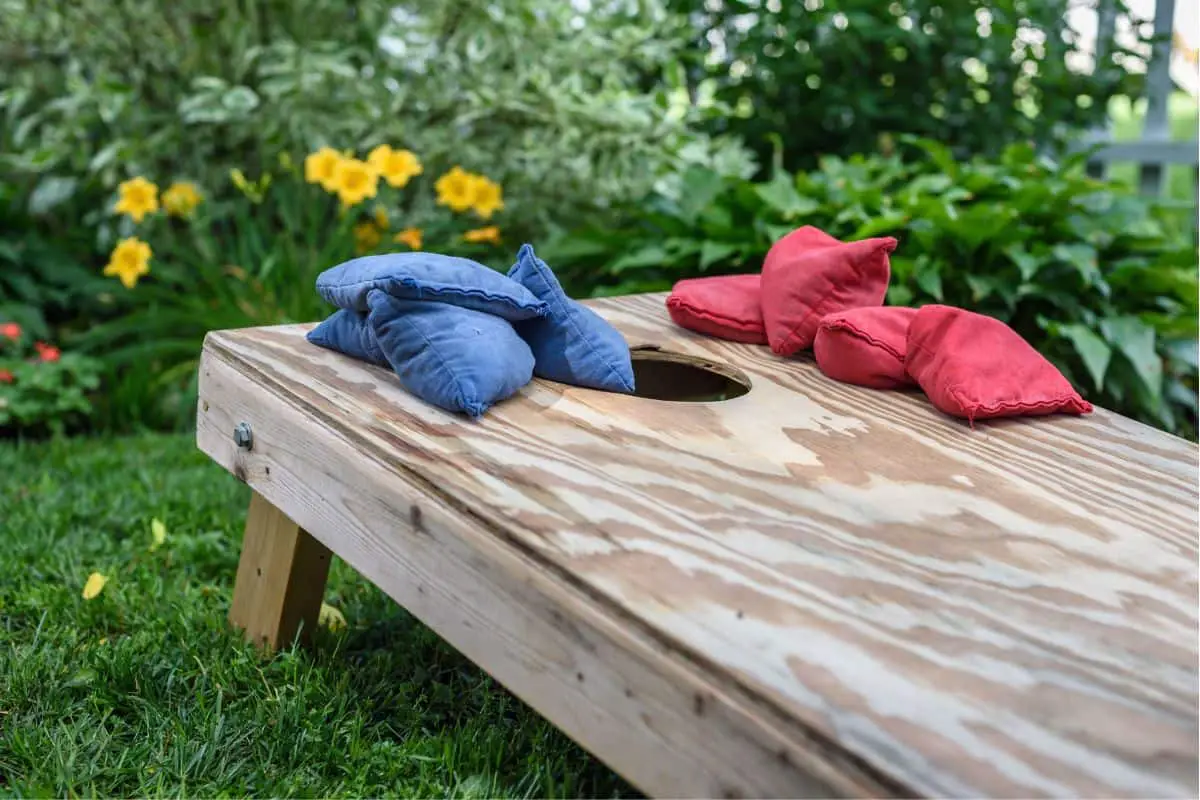
Leave a Reply